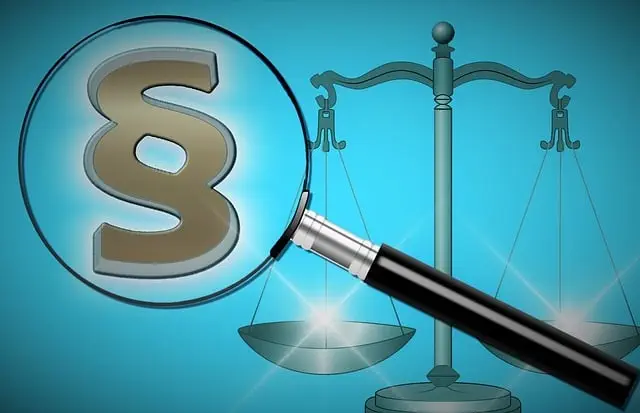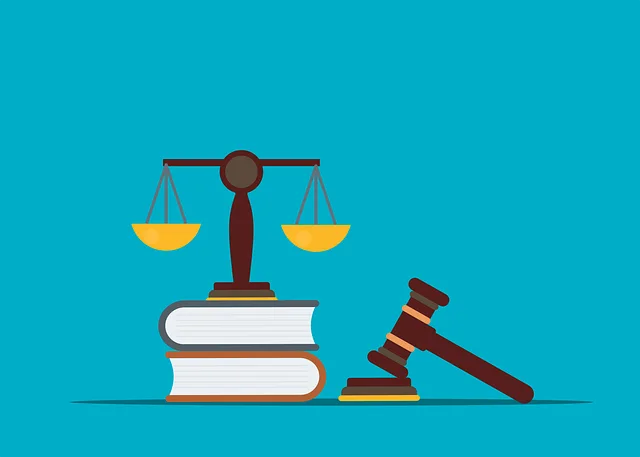Category: economic crime defense for both corporate
Economic Crime Defense for Both Corporate: A Comprehensive Overview
Introduction
In the intricate web of global business, economic crime defense stands as a critical aspect of risk management for corporations worldwide. This article delves into the strategic landscape of economic crime defense specifically tailored for corporate entities, exploring its multifaceted elements and profound impact on organizations’ resilience and sustainability. By examining historical trends, current practices, and future prospects, we aim to equip readers with an in-depth understanding of this dynamic field.
Economic crime, encompassing a spectrum of illegal activities such as fraud, corruption, money laundering, and tax evasion, poses significant threats to corporate integrity and financial stability. As global markets become increasingly interconnected, the sophistication and scale of economic crimes have evolved, necessitating robust defense mechanisms. This article will guide readers through the intricate world of corporate economic crime defense, offering valuable insights for businesses seeking to fortify their defenses.
Understanding Economic Crime Defense for Both Corporate
Definition and Core Components
Economic crime defense, in the corporate context, refers to a comprehensive strategy and set of practices designed to identify, prevent, detect, and respond to various forms of economic crimes that can impact an organization. It involves a combination of legal, operational, and technological measures aimed at mitigating risks and ensuring compliance with relevant laws and regulations.
The core components of effective corporate economic crime defense include:
-
Risk Assessment: Identifying potential vulnerabilities and assessing the likelihood and potential impact of economic crimes within the organization. This involves analyzing business processes, organizational structures, and industry-specific risks.
-
Compliance Programs: Developing robust internal controls, policies, and procedures to adhere to legal and regulatory requirements. These programs aim to prevent criminal activities and ensure ethical conduct. Examples include anti-money laundering (AML) programs, know-your-customer (KYC) protocols, and fraud prevention measures.
-
Detection and Monitoring Systems: Implementing advanced technologies and analytics to identify suspicious transactions, unusual patterns, or potential fraudulent activities. This includes real-time transaction monitoring, anomaly detection systems, and data analytics tools.
-
Investigation and Response Protocols: Establishing clear procedures for investigating suspected economic crimes, including internal audits, external investigations, and legal responses. These protocols ensure a structured approach to handling incidents while mitigating potential reputational and financial damage.
-
Employee Training and Awareness: Educating employees about economic crime risks, ethical conduct, and reporting mechanisms is vital. Regular training sessions and awareness campaigns foster a culture of integrity and encourage proactive behavior in identifying and reporting suspicious activities.
Historical Context and Significance
The concept of economic crime defense for corporations has evolved over several decades, shaped by changing criminal trends, regulatory environments, and technological advancements. In the 1980s and 1990s, the rise of complex financial schemes, such as Ponzi schemes and money laundering operations, prompted businesses to strengthen their internal controls and compliance measures. This period saw the implementation of initial AML and KYC frameworks, laying the groundwork for modern corporate defense strategies.
The global financial crisis of 2008 further highlighted the interconnectedness of economic crimes across borders, leading to increased international cooperation in combating financial fraud and corruption. As a result, regulatory bodies worldwide introduced more stringent rules and guidelines, compelling corporations to enhance their defensive mechanisms. Today, economic crime defense is recognized as an integral part of corporate governance, risk management, and compliance, with organizations recognizing the potential reputational and financial consequences of such crimes.
Global Impact and Trends
International Influence
Economic crime defense for corporates operates within a global framework, influenced by international standards, agreements, and best practices. Organizations must navigate a complex web of laws, regulations, and guidelines that vary across jurisdictions, particularly when conducting cross-border transactions. The Financial Action Task Force (FATF) plays a pivotal role in setting global standards for AML and CFT (Combating the Financing of Terrorism) measures, which serve as a blueprint for national legal frameworks.
Regional Trends and Variations
The implementation and effectiveness of economic crime defense strategies vary across regions due to differing cultural, political, and economic landscapes:
-
North America: Known for its robust regulatory framework, particularly in the US, where the Sarbanes-Oxley Act (SOX) sets high standards for corporate governance and financial disclosure. Canadian and Mexican corporations also adhere to strict AML and KYC regulations, often adopting best practices from international standards.
-
Europe: The European Union’s Anti-Money Laundering Directive (AMLD) and the Third Money Laundering Directive (MLD3) have established comprehensive legal frameworks for member states. Countries like the UK, Germany, and France lead in implementing advanced monitoring systems and data analytics for economic crime detection.
-
Asia Pacific: Rapidly growing economies in this region, such as China, India, and Japan, are enhancing their regulatory measures to combat economic crimes. The Asia/Pacific Anti-Money Laundering Group (APAC AMLG) facilitates regional cooperation, while local authorities implement stringent KYC procedures and transaction monitoring systems.
-
Middle East and Africa: Some countries in these regions have been proactive in adopting international standards, particularly in the financial sector. However, variations in regulatory frameworks and enforcement capabilities exist across different nations. The Gulf Cooperation Council (GCC) states have implemented robust AML regulations, while some African countries are still in the process of strengthening their economic crime defense mechanisms.
Current Practices in Corporate Economic Crime Defense
Anti-Money Laundering (AML) Programs
AML programs form a cornerstone of corporate economic crime defense. They involve customer due diligence, transaction monitoring, and suspicious activity reporting (SAR). Advanced analytics and AI-driven systems enable real-time detection of potential money laundering schemes. Many organizations employ centralized AML platforms to streamline processes and improve efficiency.
Know-Your-Customer (KYC) Protocols
KYC procedures ensure that businesses understand the identity and risk profile of their customers. This involves verifying customer information, assessing risks associated with different types of clients, and implementing ongoing monitoring. Digital KYC solutions, leveraging biometric data and artificial intelligence, are gaining traction for their speed and accuracy.
Fraud Detection and Prevention
Fraud remains a significant concern for corporates, impacting financial statements, operations, and reputation. Advanced analytics, machine learning algorithms, and behavior analytics are employed to identify patterns indicative of fraudulent activities. Real-time transaction monitoring systems flag unusual transactions, while predictive models anticipate potential fraud risks.
Compliance Programs and Training
Robust compliance programs ensure adherence to legal and regulatory requirements. These include regular training sessions for employees at all levels, updating policies and procedures, and conducting internal audits. Many organizations appoint dedicated compliance officers or establish compliance committees to oversee these efforts.
Future Prospects and Emerging Technologies
Artificial Intelligence (AI) and Machine Learning (ML)
AI and ML are transforming economic crime defense by enhancing detection capabilities and automation of repetitive tasks. These technologies can analyze vast amounts of data, identify complex patterns, and predict potential risks. Natural Language Processing (NLP) enables the analysis of unstructured text data, such as news articles and social media posts, to uncover potential money laundering or corruption schemes.
Blockchain and Distributed Ledger Technology (DLT)
Blockchain technology offers enhanced transparency and security for transactions, making it a valuable tool in combating economic crimes. DLT provides an immutable audit trail, improving the detection of fraudulent activities and money laundering. Smart contracts can automate compliance processes, reducing manual intervention and potential human errors.
Regulatory Evolution and International Cooperation
As global economic crime trends evolve, regulatory bodies worldwide are adapting their guidelines and standards. Increased international cooperation is expected to lead to more harmonized approaches, particularly in sharing intelligence and best practices. Organizations must stay abreast of these changes and incorporate them into their defense strategies.
Conclusion
Corporate economic crime defense is a dynamic field that requires continuous adaptation to evolving criminal trends, regulatory environments, and technological advancements. By implementing robust compliance programs, advanced detection systems, and comprehensive training initiatives, organizations can fortify their defenses against various forms of economic crimes. As the global business landscape continues to evolve, staying ahead of these challenges will be crucial for corporate resilience and sustainability.
Protect Your Wealth: Top Economic Crime Defense for Corporations & Individuals

Tired of the constant worry that comes with protecting your corporation from financial threats? It&#…….








